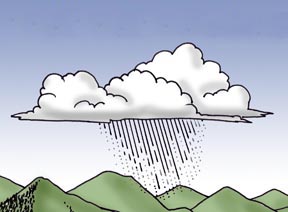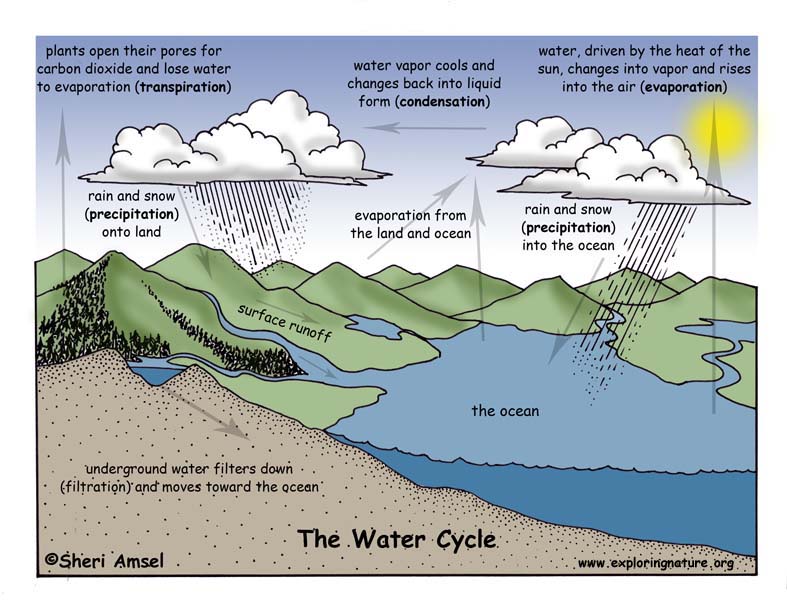

Water comes in three forms – liquid (water), solid (ice) and gas (water vapor). How do clouds form? Every day, water on the Earth – in oceans, lakes and rivers – is heated by the sun and rises off the earth as water vapor by evaporation. This water vapor is cooled as it rises up into the atmosphere and turns back into water droplets – it condenses. It clings to small particles in the air – like dust or pollen. When water vapor condenses back to liquid up in the atmosphere it forms clouds. This is also helped by the lower pressure found up higher in the atmosphere.
You can see water condensation all around you on the Earth too. Just look at the glass of a cold drink on a hot day or dew-covered grass in the morning or your fogged up ski goggles. Condensation happens when warm water vapor meets cooler air and turns back to a liquid. This can be shown in an experiment. Let’s try it.
Read More about the Water Cycle.
Materials:
Procedures:
Explanation: By releasing the pressure on the bottle you have lowered the air pressure, simulating low air pressure up in the atmosphere where clouds form.
NGSS: Appendix F – Science and Engineering Practices
Practice 3 - Planning and Carrying Out Investigations
K–2 Condensed Practices
Planning and carrying out investigations to answer questions or test solutions to problems in K–2 builds on prior experiences and progresses to simple investigations, based on fair tests, which provide data to support explanations or design solutions.
3-5 Condensed Practices
Planning and carrying out investigations to answer questions or test solutions to problems in 3–5 builds on K–2 experiences and progresses to include investigations that control variables and provide evidence to support explanations or design solutions.
6–8 Condensed Practices
Planning and carrying out investigations in 6-8 builds on K-5 experiences and progresses to include investigations that use multiple variables and provide evidence to support explanations or solutions.
When you research information you must cite the reference. Citing for websites is different from citing from books, magazines and periodicals. The style of citing shown here is from the MLA Style Citations (Modern Language Association).
When citing a WEBSITE the general format is as follows.
Author Last Name, First Name(s). "Title: Subtitle of Part of Web Page, if appropriate." Title: Subtitle: Section of Page if appropriate. Sponsoring/Publishing Agency, If Given. Additional significant descriptive information. Date of Electronic Publication or other Date, such as Last Updated. Day Month Year of access < URL >.
Amsel, Sheri. "Cloud Making Activity - How Do Clouds Form?" Exploring Nature Educational Resource ©2005-2024. December 13, 2024
< http://www.exploringnature.org/db/view/Cloud-Making-Activity-How-Do-Clouds-Form >

